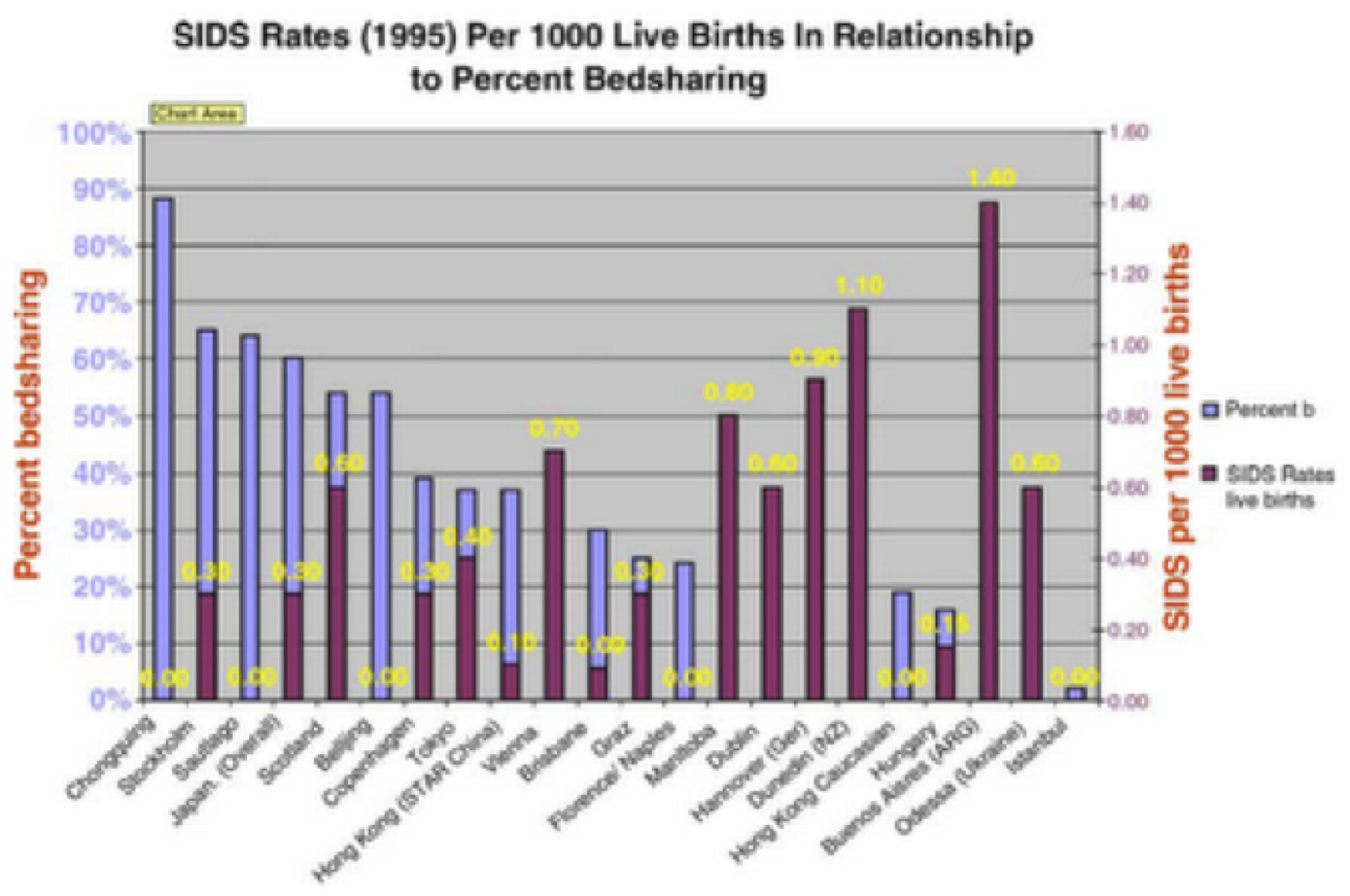There are few journalists with enough knowledge of statistics to check the facts of those making wild claims. It has become a hobby of mine to actually check the facts, particularly of the most outrageous claims, which typically go unchallenged. Please send any tips for future installments of Macro Media Watch to [email protected].
Today’s Media Watch instalment is a little off-topic, but symptomatic of the kind mindless media fear mongering that I’ll b aiming to expose and very relevant to young families (including my own).
Within 24 hours of the Victorian Coroner’s Prevention Unit releasing a background report into infant deaths from co-sleeping (parents sharing beds with infants), no less than 31 media outlets have reproduced the media release beneath fear-laden, but unrelated, headlines.
Landmark study reveals dangers of sharing bed with babies
Fear as babies die in their sleep
Cuddling Leading to Infant Deaths in Victoria Triggers Investigation
Sharing Bed Could Lead To Death of Baby?
That was 3rd October. Almost two months later, the Victorian Coroner, John Olle, made a public address warning of the inconsistent advice given to parents about co-sleeping, adding further alarm to already confusing and emotional topic for parents. The Coroner needs to share much of the blame for complete void between the fact the report prepared by his own office, and message being propagated in the media.
After reading such extreme headlines back in October, I obtained a copy of the background study from the Coroner’s office in order to gain a better understanding of these horrific tales. Then I read it. Actions any journalist could have taken.
What I found was that the Coroner’s background study’s conclusions are nothing like what the headlines suggest. It notes:
The study was restricted to a case series of deaths, for which no comparison groups were available. Without being able to compare the proportion of co-sleeping among the fatal cases to the proportion of co-sleeping among non-fatal cases, it is not possible to provide an estimate of the increased risk of death attributable to co-sleeping.
In fact, the study is simply an analysis of a selection of case-study data to inform an ongoing investigation, for which the Victorian Coroner is currently seeking input. The investigation was triggered because the proportion of unexplained infant ‘sleep’ deaths associated with co-sleeping increased from 21% to 45% between 2008 and 2010 (7 deaths to 15 deaths).
If any of these journalists had modicum of mathematical aptitude they would have realised that proportion of infant deaths from co-sleeping is meaningless without knowing the proportion of infants who co-sleep (the exposure level). If 90% of infants co-sleep, but the only make up 45% of unexplained sleeping deaths, that is some significant evidence to show that co-sleeping could actually decrease the risk of infant sleep deaths.
More importantly, if the rate of co-sleeping is constant, than some other factor MUST be to blame for the changing ratio (even if that factor is random variability). Perhaps cots have become safer since 2008?
Unfortunately the evidence on sleeping habits of infants during this period is limited. This survey from 2008 shows that, in a sample of 6383 breastfeeding mothers with babies under 1 year old, about 37% of mothers co-sleep with their baby. If that ratio has increased since that time it may very well explain most of the data seen by the Coroner. Other evidence suggests that breastfeeding mothers are three-times more likely to bed-share, and the ABS estimates that about 48% of babies under one year of age are breastfed (consistent between 1995 and 2001), although the proportion declines from about 85% to 30% over the period. This gives a rough picture of co-sleeping habits in 2008 of about 29% – with co-sleeping deaths at 21% in this period.
Given the massive limitations of Coroner’s report, and the inherent variability in the year-to-year infant deaths statistics (a similar debate occurs with pool fencing laws), the report itself seemed rather lacking with regard to the extensive existing literature on the topic. For example, this research surveyed 4656 families internationally about sleeping arrangements and found that:
Rates of bedsharing varied considerably (2–88%) and it appeared to be more common in the samples with a lower awareness of SIDS, but not necessarily a high SIDS rate.
The below graph provides a summary of the results:
One major factor limiting the understanding of infant sleep death risks is the problem of omitted variables. The ABS surveys on breastfeeding show strong trends between mother’s age and educational attainment and breastfeeding habit. Also, the confounding factors of alcohol intake and smoking (and other health risk exposure) of the infant need to be taken into account to begin to point the finger at sleeping arrangements. With this data available one can separate the impact of co-sleeping risks from the impact from other health risk on infant ‘sleep’ deaths.
I would hope, as the Coroner’s inquiry progresses, these issues will be addressed in detail.
So back to the news headlines. Did the Coroner’sstudy show that cosleeping leads to greater risks of infant death? No. Was this a landmark study revealing dangers of cosleeping? No. Was there fear as babies die in their sleep? I couldn’t say, but it’s not in the report. Did anyone point the finger at cuddling? No. And the answer to the final headline’s questions, could sharing a bed lead to death of baby? Well, yes. Just as not sharing a bed could.
Tips, suggestions, comments and requests to [email protected] + follow me on Twitter @rumplestatskin
